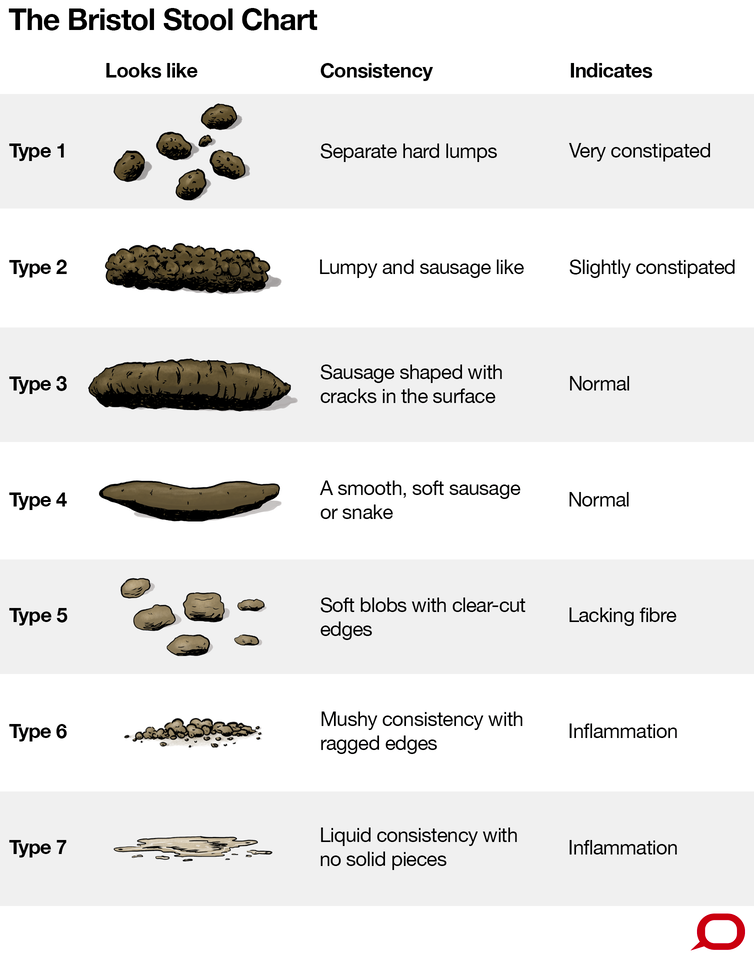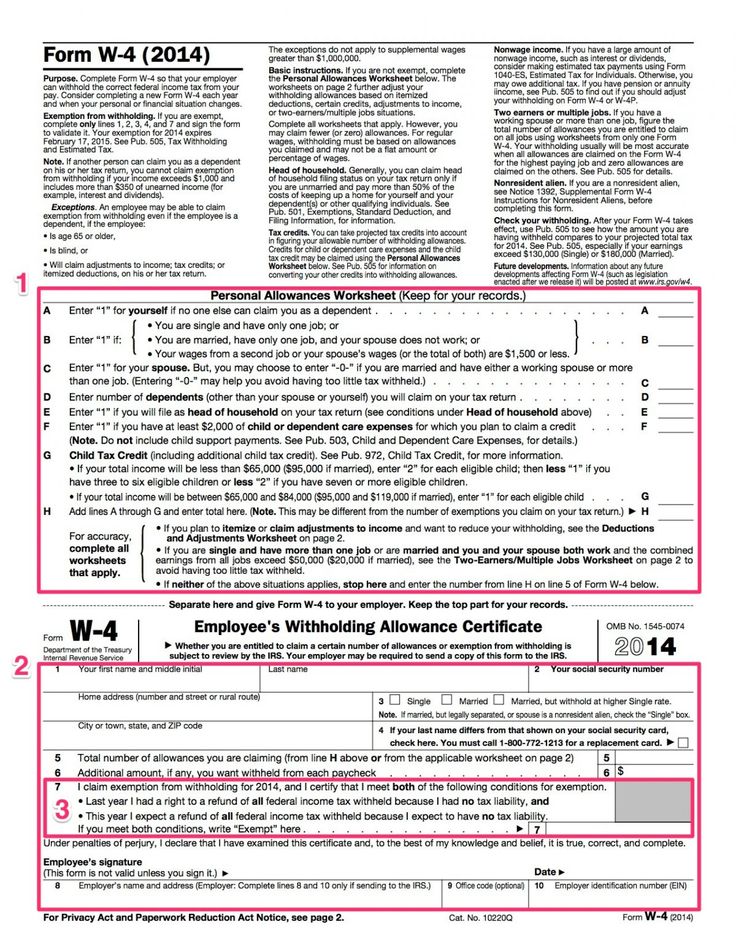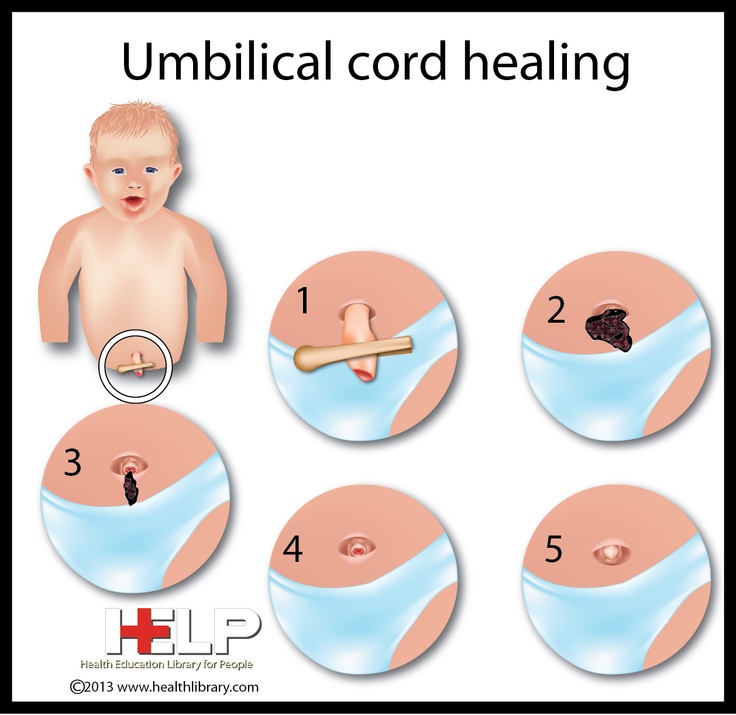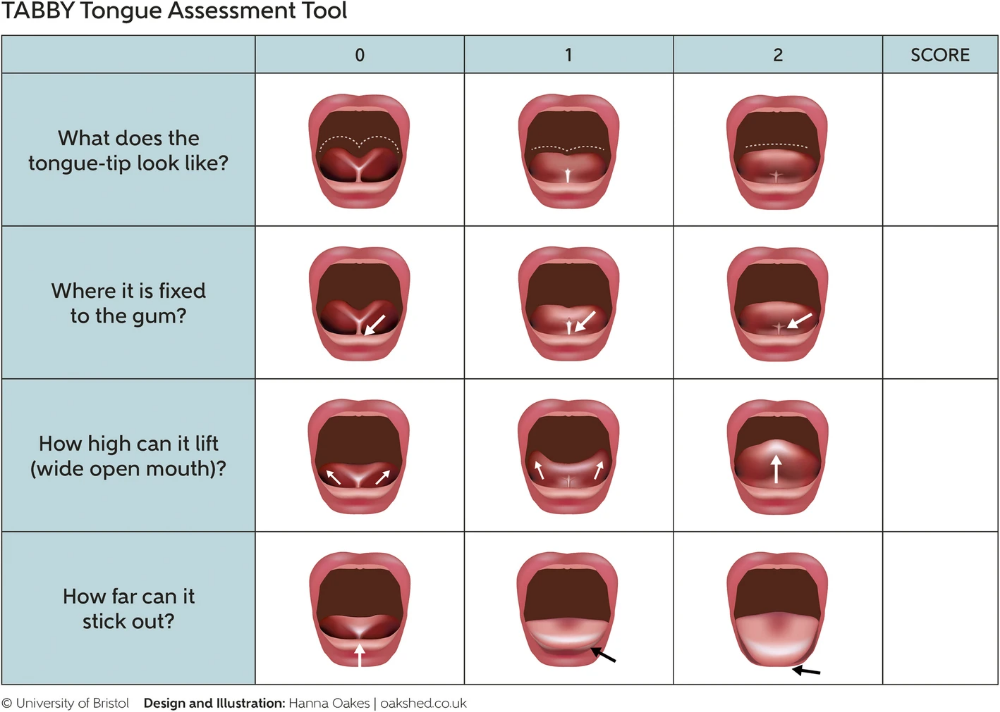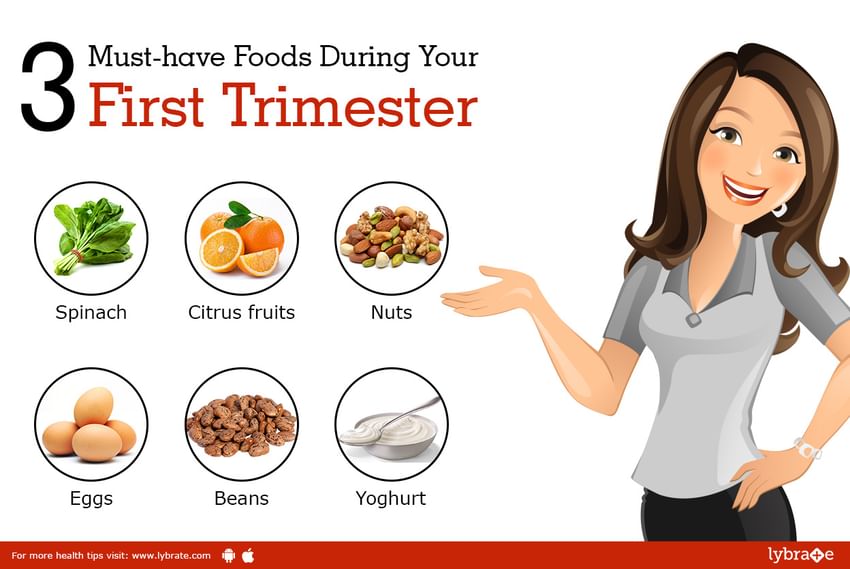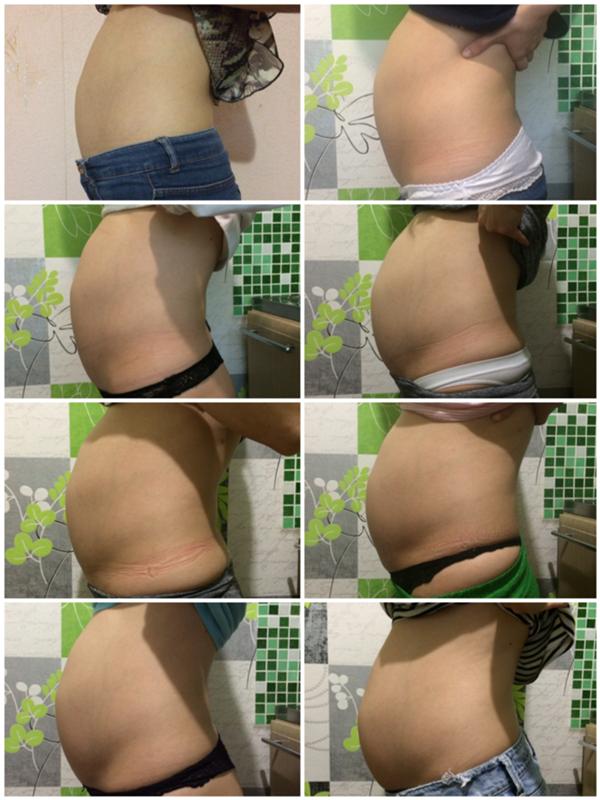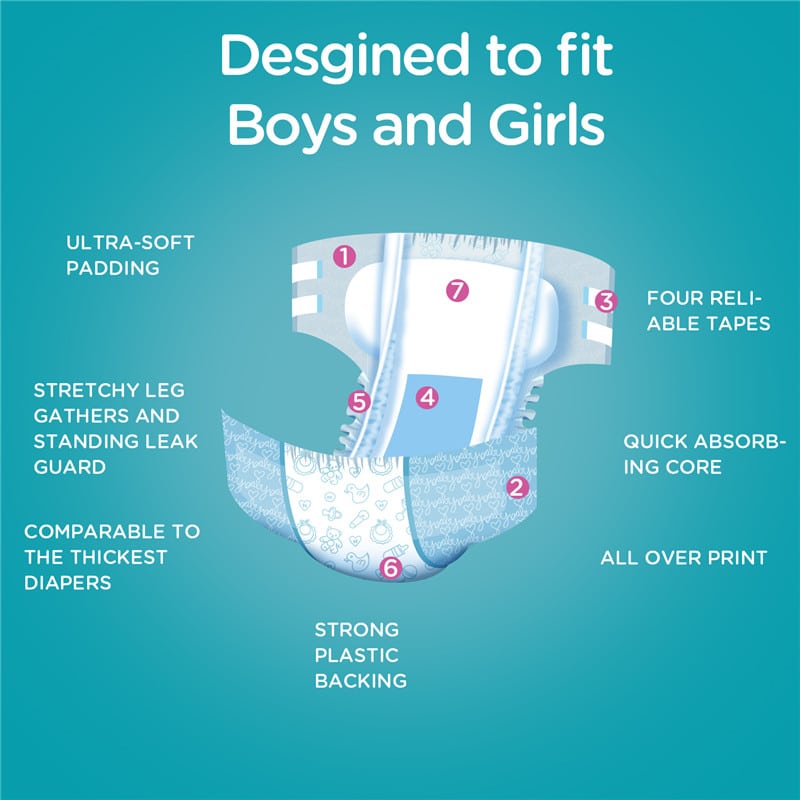Recovery after caesarean
6 Tips on Sleep, Pain, Diet, and Much More
Childbirth is an exciting time. You finally get to meet the baby growing inside you for the last 9 months.
Yet, having a baby can be taxing on your body, especially if you’ve had a cesarean delivery, commonly referred to as a C-section. You’ll need more time to recover than you would after a routine vaginal delivery.
Here are six suggestions to help speed up your recovery so you can spend less time sore and tired — and more time bonding with your new baby.
A cesarean delivery (C-section) is major surgery. Just like with any surgery, your body needs time to heal afterward.
Expect to stay in the hospital for 2 to 4 days after your delivery. If there are complications, your stay will be longer. Give your body 6 to 8 weeks to fully heal.
That’s easier said than done. It’s hard to crawl into bed for hours on end when you have a baby who’s demanding lots of attention.
You’ve probably heard this advice from well-meaning friends and relatives: “Sleep whenever your baby sleeps. ” They’re right. Try to sleep whenever your baby naps.
Ask for help from those friends and relatives with diaper changes and housework so you can lie down when possible. Even a few minutes of rest here and there throughout the day can help.
Take extra care in getting around while you heal. Follow these tips:
- Avoid going up and down stairs as much as you can. Keep everything you need, like food and supplies for changing diapers, close to you so that you do not have to get up too often.
- Do not lift anything heavier than your baby. Ask for help from your partner, friends, or family members.
- Whenever you have to sneeze or cough, hold your abdomen to protect the incision site.
- It could take up to 8 weeks for you to get back into your normal routine. Ask your doctor when it’s fine to exercise, go back to work, and drive. Also wait to have sex or use tampons until your doctor gives you the green light.
- Avoid strenuous exercise, but do take gentle walks as often as you can.
 The movement will help your body heal and prevent constipation and blood clots. Plus, walks are a great way to introduce your baby to the world.
The movement will help your body heal and prevent constipation and blood clots. Plus, walks are a great way to introduce your baby to the world.
Your postpartum mental health
Remember that your mental health is as important as your physical health. Having a baby can bring up feelings you never expected.
If you feel sad, disappointed, anxious, or exhausted, do not ignore it. Talk about your emotions with a friend, your partner, your doctor, or a counselor.
Ask your doctor what pain medications you can take, especially if you’re breastfeeding or chestfeeding.
Depending on the level of your discomfort, your doctor might prescribe a pain reliever or advise you to take an over-the-counter (OTC) one, such as ibuprofen (Advil, Motrin) or acetaminophen (Tylenol).
In addition to pain medication, you can use a heating pad to relieve discomfort at the surgical site.
Good nutrition is just as important in the months after you deliver as it was while you were pregnant.
If you’re breastfeeding or chestfeeding, you’re still your baby’s primary source of nutrition. Eating a variety of foods will keep your baby healthy and help you get stronger.
A 2017 study shows that eating fruits and vegetables while breastfeeding imparts flavors in breast milk that increase your child’s enjoyment and consumption of those foods as they grow.
Also, drink plenty of fluids, especially water. You need extra fluids to boost your milk supply and to avoid constipation.
Your body will continue to undergo physical changes even after your baby is born. Changes you might experience include:
- afterpains, a type of cramping that occurs as your uterus returns to its prepregnancy size
- breast engorgement, or swelling
- lochia, a type of vaginal discharge mostly made of blood
- vaginal dryness
- diastasis recti, or the separation of your abdominal muscles
- hair loss
- skin changes, like loose skin or acne
- night sweats
- headache
Some of these, like afterpains and lochia, will eventually go away on their own. Treatments and home remedies are available for some of the others.
Treatments and home remedies are available for some of the others.
Try the following:
- lubricants or vaginal creams made of estrogen for vaginal dryness
- exercises for diastasis recti or loose skin
- supplements and topical treatments for hair loss
- topical treatments, oral isotretinoin (Absorbica, Amnesteen, Claravis), or birth control pills for acne
- lightweight pajamas for night sweats
- OTC pain medications for headache
Product picks
Check out our recommendations for postpartum hair products and postpartum pajamas.
There are a variety of options to help you manage breast engorgement, like:
- a warm compress or warm shower
- a cold compress or an ice pack
- nursing to expel the milk
- breast massage during nursing
- OTC pain medications
The 12 weeks after your baby is born are sometimes known as the 4th trimester.
The American College of Obstetricians and Gynecologists (ACOG) recommends that people see their OB-GYN or another doctor multiple times during this period.
The first assessment should take place no later than 3 weeks postpartum. A comprehensive final visit should occur no later than 12 weeks postpartum.
During these checkups, you and your doctor will discuss topics like:
- your physical recovery
- your mental health
- your energy levels and how you’re sleeping
- how your baby is doing and their feeding schedule
- birth control and whether you’re considering having more children
- chronic condition management
- how you’re managing any pregnancy-related complications, such as high blood pressure
You’ll probably feel some soreness in the incision, and you may have bleeding or discharge for up to 6 weeks after the C-section. That’s expected.
However, the following symptoms warrant a call to your doctor, because they could signal an infection:
- redness, swelling, or pus oozing from the incision site
- pain around the site
- fever of more than 100.4°F (38°C)
- bad-smelling discharge from the vagina
- heavy vaginal bleeding
- redness or swelling in your leg
- difficulty with breathing
- chest pain
- pain in your breasts
Also call your doctor if you feel sad and your mood never seems to lift, especially if you have thoughts of hurting your baby or yourself.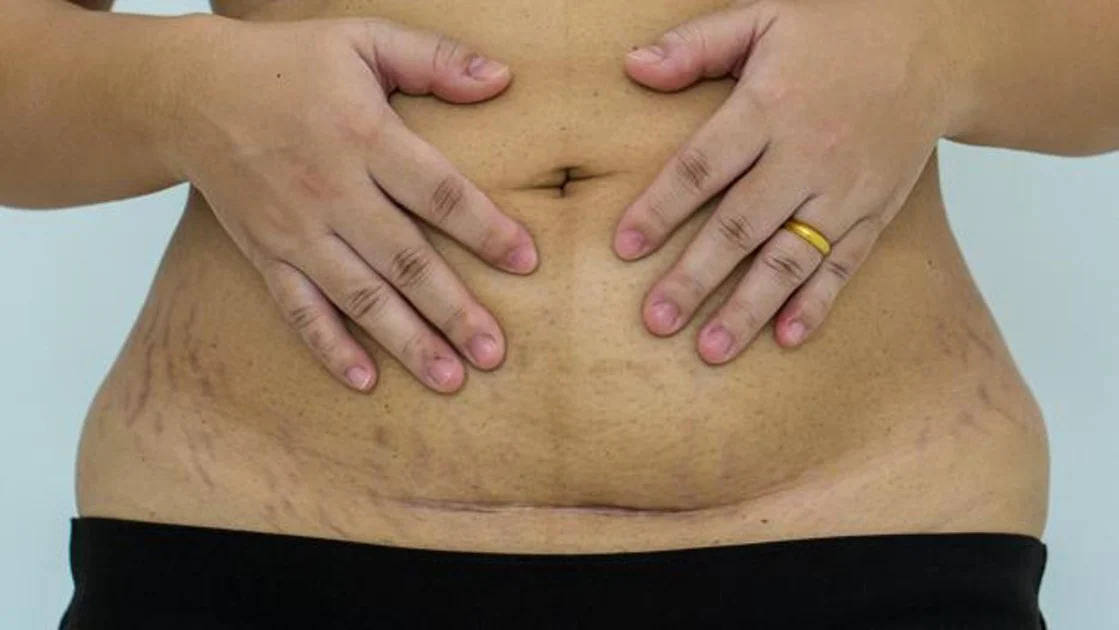
Finally, if you have a friend or sibling who went through a C-section, try not to compare yourself to them. Every person’s experience with this surgery is different.
Focus on your own healing right now and give your body the time it needs to get back to your normal.
C-Section Recovery - What to Expect: Walking, Blood Clots, & Pain
Series Cesarean Section (C-Section)
Written by Hallie Levine
About 1 of every 3 newborns in the United States are delivered by cesarean section, or C-section. That’s when the baby comes out through a cut in the mother’s belly and uterus rather than going through the birth canal and coming out through the vagina.
Afterward, you can expect to spend 2-3 days in the hospital with your new little one as you recover.
After C-Section Surgery
Most women are awake for the C-section, and you should be able to hold your baby right away.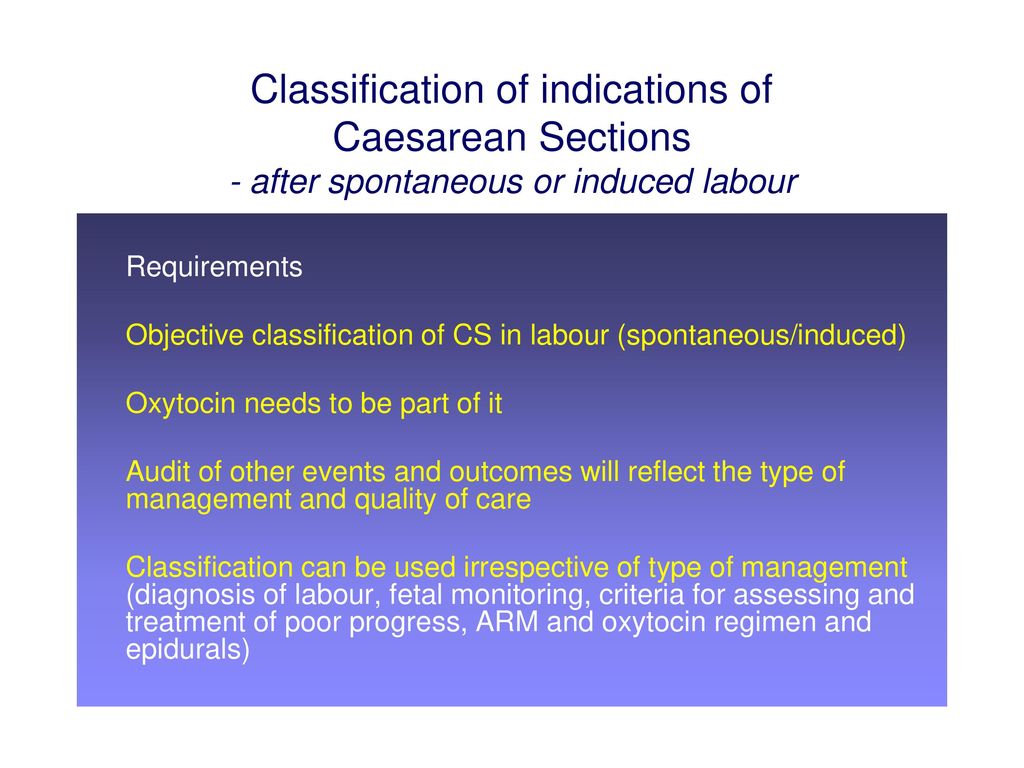 You’ll be taken to a recovery room, where nurses will check your blood pressure, heartbeat, and breathing and keep an eye on you.
You’ll be taken to a recovery room, where nurses will check your blood pressure, heartbeat, and breathing and keep an eye on you.
You may feel sick to your stomach, groggy, or itchy from the drugs used to numb you during the surgery. You may be given a pump so you can change the amount of pain medication that’s going through a thin tube into your veins.
In the days after surgery, you can expect:
- Vaginal discharge: You’ll likely have vaginal bleeding for several weeks after delivery. This is how your body gets rid of the extra tissue and blood in your uterus that kept your baby healthy during pregnancy. The first few days, you’ll see bright red blood that will gradually get lighter -- turning pink, then brown, to yellow or clear before it stops.
- Afterpains: It’s normal to have things that feel like menstrual cramps for a few days after delivery.
 They narrow the blood vessels in your uterus to help keep you from bleeding too much. Ask your doctor if you can take an over-the-counter pain medication.
They narrow the blood vessels in your uterus to help keep you from bleeding too much. Ask your doctor if you can take an over-the-counter pain medication. - Breast swelling and soreness: The first 3-4 days after delivery, your breasts make something called colostrum, a nutrient-rich substance that helps boost your baby’s immune system. After that, your breasts will swell as they fill up with milk. You can help ease tenderness by nursing or pumping, and putting cold washcloths on your breasts between feedings. If you’re not breast-feeding, wear a firm, supportive bra. Don’t rub your breasts -- that will cause them to make more milk.
- Hair and skin changes: You may notice your hair thinning in the first 3-4 months. This is normal. It’s caused by changing hormone levels. (When you were pregnant, high levels of hormones made your hair grow faster and fall out less.
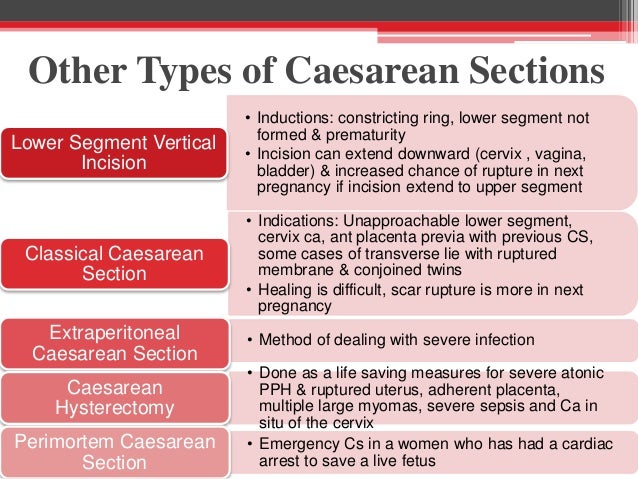 ) You may also see red or purple stretch marks on your belly and breasts. They won’t go away, but they will fade to silver or white.
) You may also see red or purple stretch marks on your belly and breasts. They won’t go away, but they will fade to silver or white. - Feeling blue: After you bring your baby home, you may find yourself going through a roller coaster of emotions. You might feel worried, anxious, or very tired during the first few weeks of motherhood. Called the “baby blues,” this comes from hormone changes. If you feel this way beyond a couple of weeks, though, call your doctor. You may have postpartum depression or anxiety, a more serious condition that happens in about 15% of all new moms. Talk therapy or antidepressants can usually help.
C-Section Incision Care
Your doctor will send you home with detailed instructions -- for instance, how long to keep your cut bandaged, how often to change bandages.
Here are some tips for taking care of your C-section incision:
- If the cut is closed with stitches, staples or glue, you should be able to remove the bandage and take showers, but check with your doctor first.
 Letting the water run down over the wound should also help with cleaning.
Letting the water run down over the wound should also help with cleaning. - When you’re washing, use mild soap and water and clean it lightly (don’t scrub, particularly if your incision is closed with steristrips or glue). Pat dry.
- Don’t soak in a bath or hot tub or go swimming until your doctor says you can.
- Try over-the-counter pain relievers such as ibuprofen or acetaminophen to manage incision pain. Ask your doctor what they recommend.
- A heating pad set on low or a warm washcloth can help with pain around your belly.
- Keep an eye out for any signs of infection. Let your doctor know if:
- Your incision is red, swollen or hot to the touch.
- It’s leaking discharge
- You develop a fever.
- Your pain is getting worse not better.
- You are having heavy bleeding
Tips for Healing After a C-Section
The area around the stitches, staples, or tape on your belly will be sore for the first few days. Keep it clean to prevent infections. You can do a few other things to speed your recovery:
Keep it clean to prevent infections. You can do a few other things to speed your recovery:
- Take it easy. A C-section is a major surgery. Don’t lift anything heavier than your baby for the first couple of weeks, and keep everything you might need within reach.
- Support your stomach. Hold your belly when you sneeze, cough, or laugh to keep it still.
- Ease your pain. A heating pad (set on low) or a warm washcloth can help with pain around your belly. You may also need acetaminophen, ibuprofen (Advil, Motrin), or other pain relievers. Most are safe to take if you’re breastfeeding.
- Drink fluids. You’ll need to replace the water you lost during delivery as well as what you lose if you nurse your baby.
Eat fiber-rich foods and smaller, more frequent meals. Try a fiber supplement if you are having constipation.
Breastfeeding After a C-Section
You can start nursing almost right away. Your body will make milk about as quickly as after a vaginal delivery. Here’s what you need to know:
Medications: You probably got pain-numbing medicine, such as an epidural, during your C-section, but it isn’t likely to affect the baby much. Your baby may be sleepy, but that should pass and they should be eager to nurse. You may be tempted to ask your doctor to cut back on your pain medicine, but it’s important that you stay comfortable. Pain can mess with the hormone that helps you make milk. If you have any questions about how the drugs you’re given can affect breastfeeding, ask to speak to the hospital’s breastfeeding specialist.
Nursing positions: The site of the surgery may make it hard to find a comfortable position to nurse your baby. You can put a pillow over your stomach to ease the baby’s weight, or try these:
- Football hold.
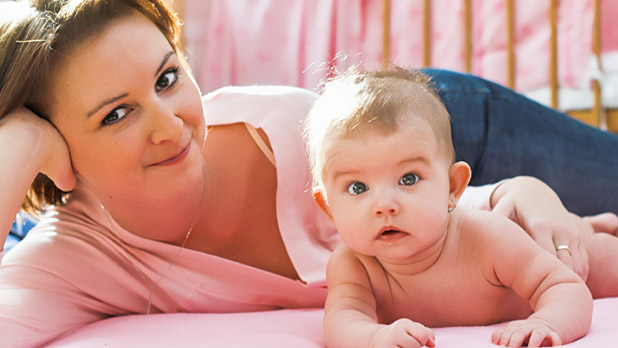 Cradle your baby’s neck in your palm, and rest their back on your forearm. Tuck the feet and legs under your arm and then lift your baby to your breast.
Cradle your baby’s neck in your palm, and rest their back on your forearm. Tuck the feet and legs under your arm and then lift your baby to your breast. - Side-lying hold. Lie down facing your baby, and use your hand to bring your nipple to their lips. You can place a pillow behind their back to keep them from rolling.
Returning to Physical Activities After a C-Section
It’s important to get out of bed and walk around within 24 hours after surgery. This can help ease gas pains, help you have a bowel movement, and prevent blood clots.
You can try gentle exercises a few days after the C-section:
- Deep breathing: Take 2 or 3 slow, deep breaths every half-hour. This can help prevent lung congestion from sitting in bed so much.
- Shoulder circles: Sit upright and roll your shoulders 20 times in both directions every hour to help with stiffness.

- Gentle stretching: Stand against a wall and raise both arms slowly above your head until you feel the muscles in your belly stretch. Hold for 5 seconds, and then relax. You can do this up to 10 times a day to boost flexibility around your stitches.
Try not to do too much housework or other activities for the first couple of weeks. Check with your doctor before returning to any of these activities, but in general you will have to wait:
- 4-6 weeks before doing heavy exercises that involve your belly or lifting anything larger than your infant
- 2 weeks before you can drive a car
- 3 weeks (once you have a healed incision) to take a bath or go swimming
Get your doctor’s OK before having sex again.
When to Call a Doctor
Once you get home, check the site of your surgery regularly for signs of infection. Here are some things you would need to let your doctor know:
- Your incision is red, swollen, hot to the touch, or leaking discharge
- You have a fever higher than 100.
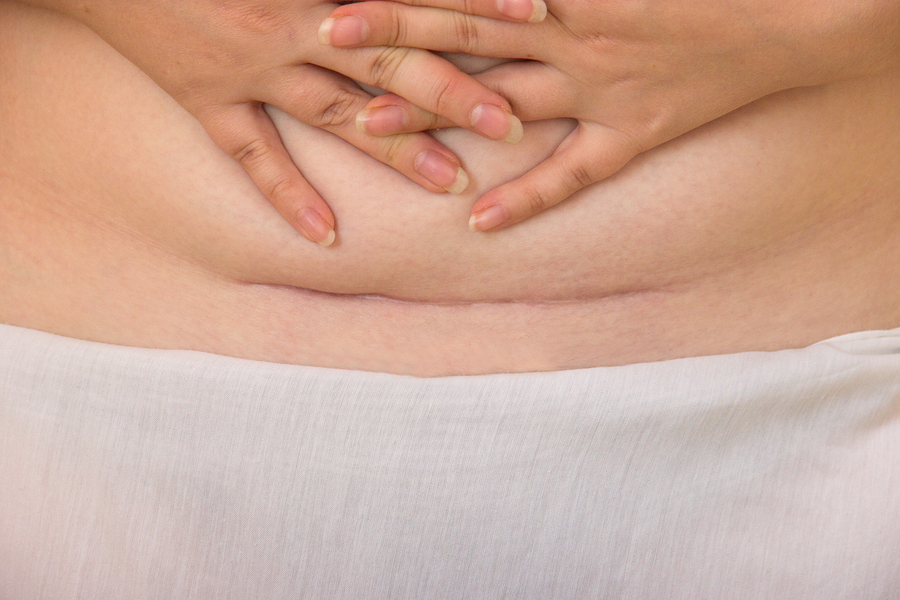 4 F.
4 F. - You have a lot of vaginal bleeding, it smells bad or has unusually large clots.
- Your pain is getting worse, not better.
- You have swelling, bumps, pain or heat in your calves (which can be signs of a blood clot)
- You have pain, redness or warmth, which are signs of infection
- You get a very bad headache that does not go away.
- You notice swelling in your hands, arms, or feet.
- You notice vision changes or have difficulty seeing.
- You have a cough, shortness or breath or pain in your chest, which could be a sign of a blood clot.
You’ll probably see your doctor about 6 weeks after delivery. They’ll check your vagina, cervix, and uterus as well as your weight and blood pressure.
Recovery after caesarean section - Juno
Recovery after caesarean section: content of the article
Reasons for caesarean section
There are three main groups of indications:
- Indications for which operative delivery is planned and the date of the operation is set in advance;
- Indications for emergency surgery;
- Indications for intervention that occur during childbirth.
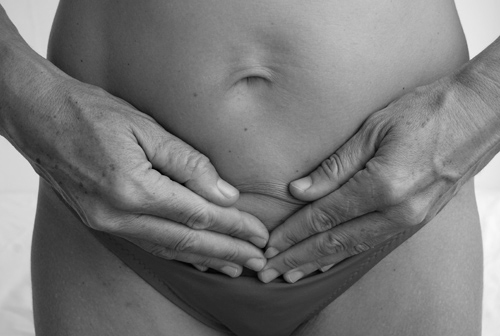 nine0011
nine0011
And the reasons are divided into relative, when there is a possibility of health problems in the pregnant woman and the baby, and absolute - the woman has a pathology of the birth canal, in which natural childbirth is impossible.
Planned intervention is carried out in the following cases:
- placenta previa and accreta;
- failure of the scar on the uterus after caesarean section, removal of myomatous nodes, etc.; nine0010 narrow pelvis II degree and above, deformity of the pelvic bones, volumetric formations of the ovaries, uterus, cicatricial cervix and vagina;
- severe symphysitis - a change in the pubic joint with significant pain and inflammation;
- previous plastic surgery on the cervix, vagina, trauma;
- with breech and mixed breech presentation of the fetus, with multiple pregnancies, when other aggravating factors are present;
- malignant neoplasm, uterine fibroids with multiple nodes; nine0011
- transverse position of the fetus, developmental delay, weight - 4500 grams or more;
- severe pre-eclampsia and eclampsia, a history of kidney transplantation in a pregnant woman;
- high myopia with changes in the fundus;
- herpes of the vulva with eruptions;
- death or disability of a child during previous births, repeated IVF attempts with additional complications.

Emergency intervention is performed in case of placenta previa, its ingrowth, bleeding, premature detachment of a normally located placenta, with a threat or completed rupture of the uterus along an old scar, acute fetal hypoxia, general diseases with a deterioration in the condition of the pregnant woman.
Indications for surgery in labor that has already begun, when there are contractions and / or water has broken, are a clinically narrow pelvis in a pregnant woman, weakness and discoordination of labor, foot presentation, prolapse of parts of the fetus or umbilical cord. nine0008
Consequences of caesarean section
Caesarean section, like any operation, is associated with negative consequences. Let's consider the most frequent ones.
First of all, an infectious process is possible. The condition of the seams, body temperature should be monitored. Also pay attention to your feelings and the nature of the discharge: if there are pains, there is more discharge, they have acquired a greenish tint and an unpleasant smell, you must urgently see a doctor and exclude inflammation of the inner layer of the uterus (endometritis), appendages (adnexitis), fiber (parametritis). They can lead to sepsis, cycle disorder, infertility. nine0008
They can lead to sepsis, cycle disorder, infertility. nine0008
You also need to keep in mind the type of anesthesia. As a rule, a planned intervention is performed under spinal anesthesia. After it, back pain, weakness and trembling in the legs may remain. But these are temporary phenomena: they gradually pass.
Seam edges may come apart. The cause of this complication is most often overweight or excessive exercise.
In some cases, adhesions develop that cause abdominal pain, disruption of the gastrointestinal tract. nine0008
How can these consequences be reduced?
First of all, a comprehensive examination of the pregnant woman is necessary. Women who are expecting a baby should be responsible for the doctor's prescriptions, take tests on time and take medications if they are prescribed by an obstetrician-gynecologist
The next important point that affects the recovery time after cesarean is the quality of the operation itself, which is affected by the chosen technique, materials, drugs used during and after the intervention, including antibiotics.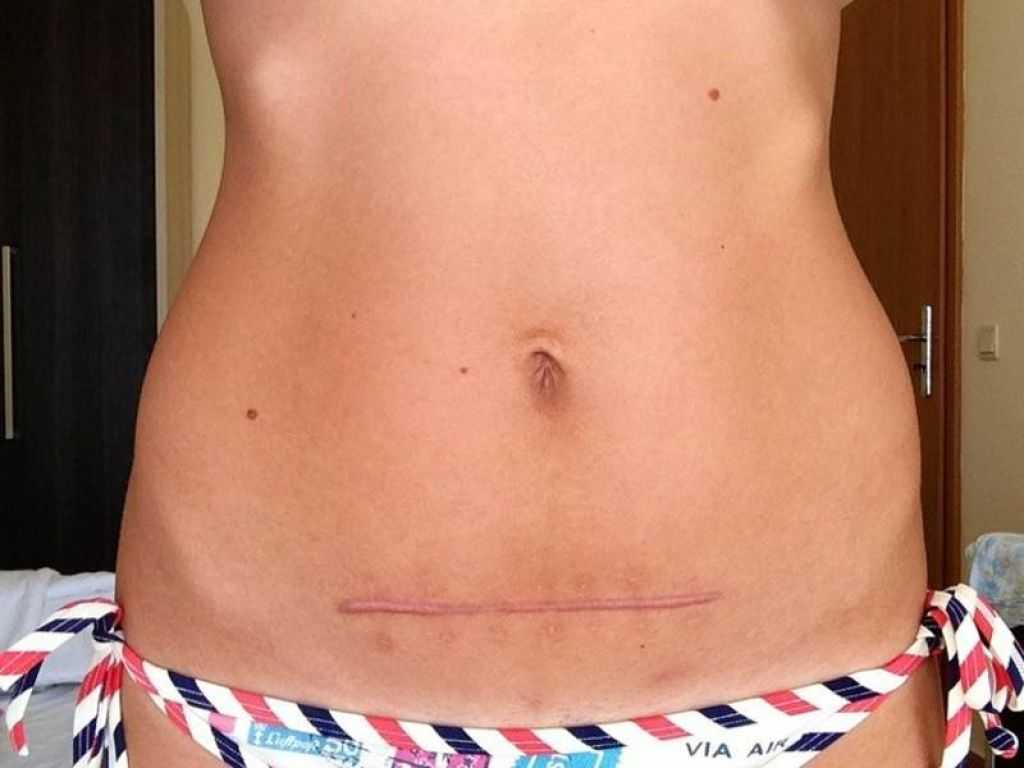 A woman should carefully study the information about the maternity hospital where she plans to give birth, find a competent doctor whom she will trust and who will conduct the birth. nine0008
A woman should carefully study the information about the maternity hospital where she plans to give birth, find a competent doctor whom she will trust and who will conduct the birth. nine0008
We need competent care for the postoperative suture during the rehabilitation period. In the maternity hospital, nurses treat the wound. Upon discharge, you will be given recommendations on how best to care for the wound so that it heals faster. If, despite the thoroughness of the treatment, you see that pus is draining, there is bloody discharge from the wound, the skin around it turns red, incomprehensible pains appear - be sure to consult a doctor.
How to get in shape faster after a cesarean
In order for the recovery to proceed smoothly, you need sufficient sleep and rest. Rest is good for both physical and mental health of a woman. Do not hesitate to ask for help from loved ones in caring for the baby, in solving everyday issues. nine0008
Try to rest during the baby's daytime sleep: you don't need to run headlong to redo household chores as soon as the baby falls asleep. Remember, the most valuable thing right now is your health, not pots full of food and a shiny apartment. Therefore, calmly go to bed nearby or just lie down.
Remember, the most valuable thing right now is your health, not pots full of food and a shiny apartment. Therefore, calmly go to bed nearby or just lie down.
If you are worried about pain, because of them it is impossible to sleep after a cesarean and do your usual activities, you do not need to endure: consult a doctor so that you can find a safe painkiller. nine0008
Breastfeeding
With operative delivery, there may be difficulties with breastfeeding. The reason is the effect on the baby of drugs that were administered to the woman during and after childbirth. Features of the neonatal period also play a role. Natural childbirth is physiological for the child, and the operation can lead to adaptation disorders.
It must be borne in mind that a woman is recommended a diet after surgery. Because of this, problems with the formation of lactation are possible. According to studies, the amount of nutrients in the milk of an operated woman is reduced. Quantity also suffers.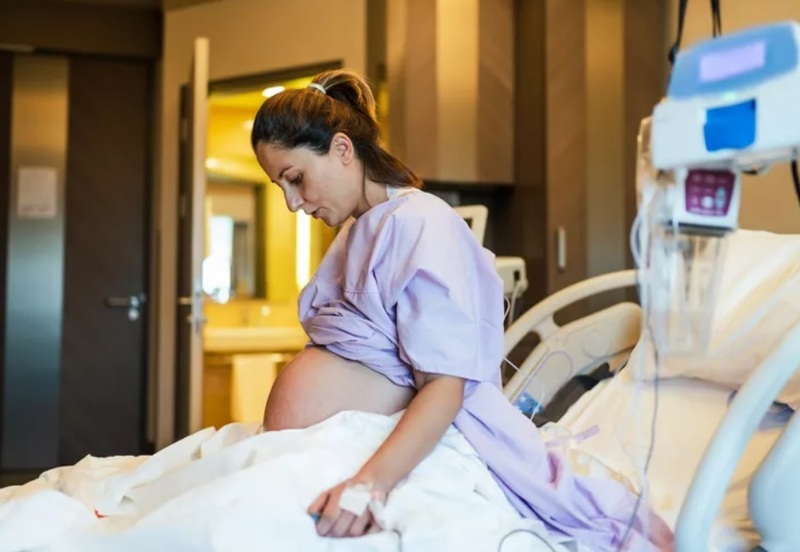 nine0008
nine0008
What can be done?
- Early breastfeeding - in the first 2 hours after delivery. The use of spinal anesthesia allows this to be done, since the mother is conscious. If, for medical reasons, it is impossible to attach the newborn to the breast, it is necessary to express the breast periodically;
- If you are a young and inexperienced mother, ask the medical staff to show you how to properly attach the baby to the breast (lying on your side, sitting). This will help to avoid cracks in the nipples; nine0011
- To stimulate lactation, procedures such as UHF, massage, and ultrasonic exposure can be carried out. Some herbal remedies are also effective: anise, oregano, dill or pharmacy fees. Sometimes special mixtures or herbal preparations for nursing are prescribed.
Take care of a nursing bra. They perfectly support the chest due to the wide straps, do not squeeze the blood vessels. In addition, there are many options on the market now that are not only comfortable, but also beautiful. Do not be lazy and study the quality of materials and seams on linen. nine0008
Do not be lazy and study the quality of materials and seams on linen. nine0008
Necessary restrictions after caesarean section
For the first 1.5-2 months, it is worth limiting weight lifting with a weight of more than 3.5-4 kg and active sports.
Loads begin to turn on gradually after a month and a half. Of course, before that, you need to consult with your doctor: there may be shifts taking into account the characteristics of your body.
From exercises, exclude those that involve stress on the shoulders, arms, upper back, as this can affect milk production. Also avoid bending over, squatting. nine0008
Sexual relations are prohibited for the same period (1.5‒2 months). In this matter, you should also rely on the recommendations of the gynecologist who will guide you in the antenatal clinic. If the doctor does not prohibit, there is no discharge, but there is a desire, then there are no restrictions. Consider in advance how you will protect yourself.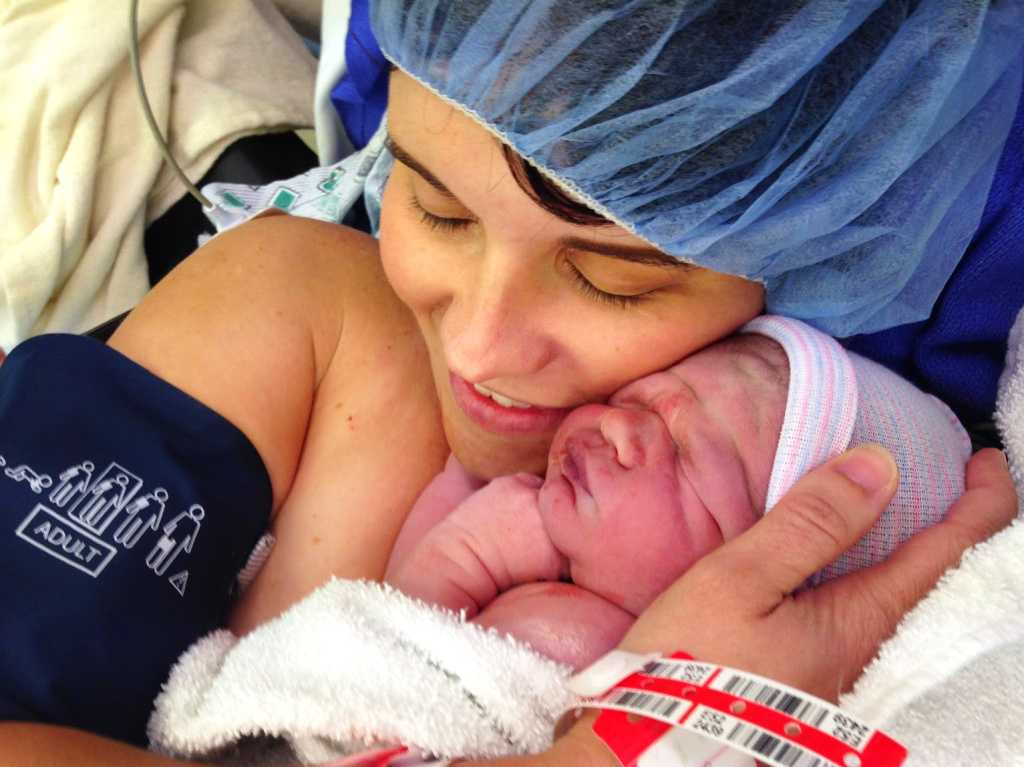
After cesarean, you can not take a bath, visit baths and saunas. A warm shower is the preferred option.
We think there is no need to talk about the dangers of stress for mom. nine0008
Recovery process after caesarean section
To recover quickly after a caesarean, you need to follow some recommendations. They relate to physical activity, nutrition, wearing special devices.
Physical activity
Movement is life. But in this case, physical activity should be moderate. With this approach, you will recover quickly and without complications.
Usually, 3-4 hours after a caesarean, a woman in labor can bend and unbend her arms and legs. After a while, she will be able to roll over - doctors recommend doing this regularly so that there are no congestion and adhesions, and thromboembolic complications do not develop. nine0008
Lying, do light gymnastics: rotate with your hands, feet, make various movements with your fingers (rotation, flexion and extension). Exercises with dilution and adduction of the legs bent at the knees (in the prone position) can be useful. Focus on your well-being and feelings.
Exercises with dilution and adduction of the legs bent at the knees (in the prone position) can be useful. Focus on your well-being and feelings.
If the recovery after cesarean goes smoothly, the woman is allowed to get out of bed already on the first day: with the help of relatives or maternity hospital staff. You can not make sudden movements: act smoothly and carefully. Over time, you will be able to periodically get up and walk around the ward. Help yourself with your hands so that there is no divergence of the seams: hold on to the headboard or the wall. If you have dizziness, weakness, tell your doctor. nine0008
It will be more comfortable to sleep on your back or on your side. You can't lie on your stomach. Firstly, the breast is compressed, which will affect lactation. Secondly, there is pressure on the stomach, the stitches are pulled.
Power supply
If the operation was performed under spinal anesthesia, immediately after it is completed, the woman can drink.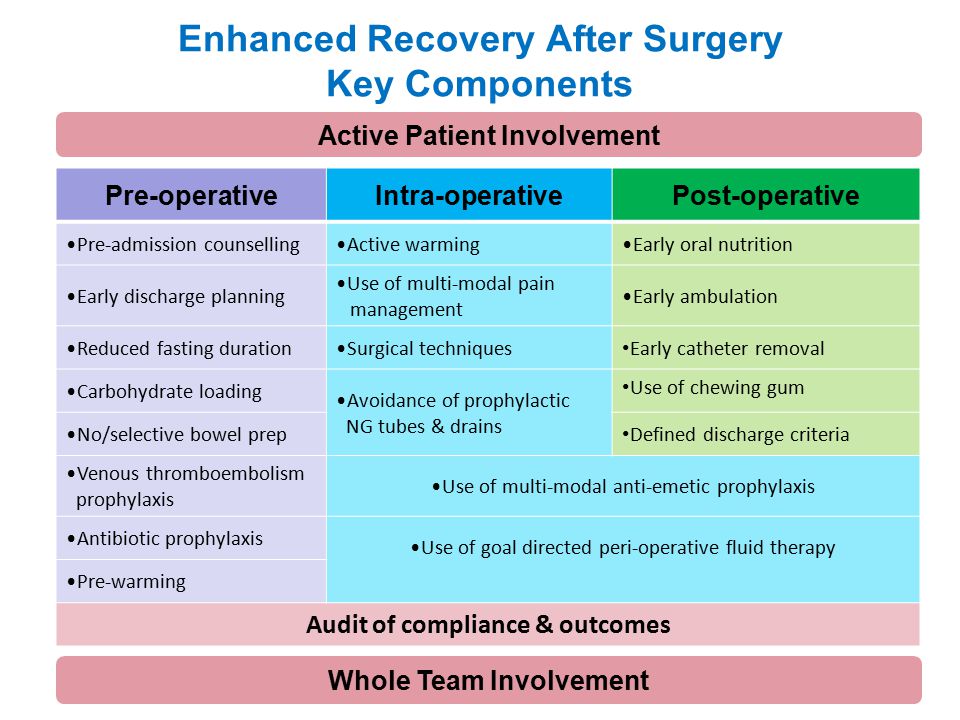 Eating is allowed starting from the first hour. Forbidden: fruits, vegetables, bread. It is also necessary to exclude foods that cause increased gas formation: smoked meats, fatty foods, seasonings. They can lead to abdominal pain and spasm, problems with stitches, and colic in the baby. nine0008
Eating is allowed starting from the first hour. Forbidden: fruits, vegetables, bread. It is also necessary to exclude foods that cause increased gas formation: smoked meats, fatty foods, seasonings. They can lead to abdominal pain and spasm, problems with stitches, and colic in the baby. nine0008
When general anesthesia is used, fluid intake is allowed after 2 hours. After 6 hours, you can drink the broth, and after a day, you can eat ordinary food.
Bandage wear
The bandage relieves tension from the abdominal muscles, promotes rapid recovery after a cesarean. It is important to choose it individually, according to your size.
You also need to take into account that you need to gradually reduce the time of wearing the bandage in order to prevent muscle atrophy. At first, you wear a bandage all the time. Every day, reduce the wearing time and put it on before walking, bathing the child and other physical activities. nine0008
Physical activity
Loads improve mood, reduce depression, allow you to keep weight under control, and normalize bowel function.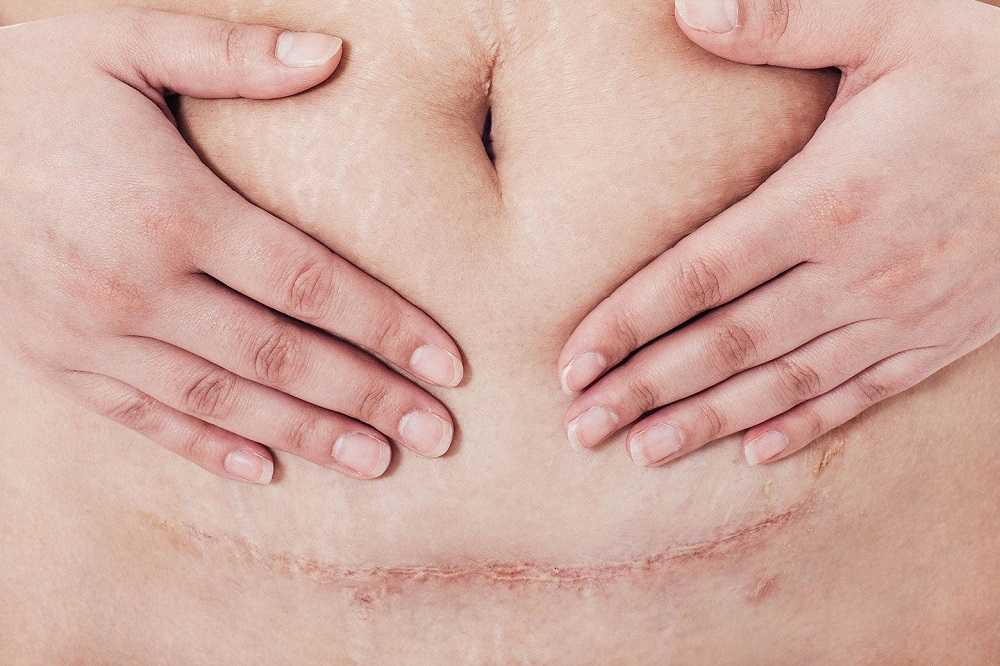
In the beginning, walking will be useful: both for your recovery and for the baby. Try to go outside every day. Dress your child according to the weather. It is advisable to walk away from the tracks.
Fitball exercises will also help to tone the muscles. Combine classes with gymnastics for the baby - then you will get a double benefit. nine0008
If you did yoga, fitness before giving birth, you can start exercising after 2 months. In the beginning, classes should be easy. In general, it is not recommended to exhaust yourself during this period.
Do not forget about rest and good nutrition: together with physical activity, they contribute to a quick recovery after a cesarean.
The rehabilitation of a woman takes a long time. After the wounds have healed, you can begin to perform exercises to strengthen the muscles of the abdomen, buttocks, lumbosacral region, thighs, and pelvic floor. It is advisable to exercise under the supervision of a rehabilitation specialist. nine0008
nine0008
Menstrual cycle
The restoration of the cycle can occur at different times: it's all individual. For some, menstruation begins after 3 months, and for someone only after a year. Lactation, age, nutrition, lifestyle, rest, stress, existing diseases play a role.
Although prolactin levels increase during lactation, which suppresses ovulation, the absence of periods does not mean that you cannot become pregnant. If not protected, conception can occur in the very first cycle, when ovulation occurs. Therefore, discuss with your gynecologist which method of contraception is preferable in your case. Experts recommend planning the next pregnancy no earlier than 2 years later. So, for 2 years you must protect yourself. nine0008
Pay attention to the nature of the discharge. The first days of the cycle may be accompanied by prolonged bleeding. Over time, everything gets back to normal. But if this lasts for a long time, it is better to see a doctor. You can not leave this symptom unattended: you risk losing a lot of blood. In addition, the loss of a large amount of blood can be with various pathologies of the reproductive sphere.
In addition, the loss of a large amount of blood can be with various pathologies of the reproductive sphere.
Advice for women
Recovery after a caesarean section is different for everyone. How long this period will last depends on the general state of health, concomitant diseases, and the reason for the operation. See your doctor and follow his recommendations. nine0008
Be healthy!
Recovery after caesarean section | Kaplan Medical Center
בתי חולים > קפלן > Home page > Medical departments > Obstetrics and Gynecology > Recovery after caesarean section
- from:
- Professor Eddie Weisbuch
A caesarean section is a surgical procedure, a complete abdominal operation with the use of anesthesia. The rate of recovery after caesarean depends on compliance with the basic rules of behavior. The most important recommendation is to try to get out of bed as soon as possible to prevent the occurrence of the so-called "vein thrombosis", which is considered a relatively common complication after this operation. nine0004 As soon as the operation is over, you will be escorted to the intensive care unit, where you will spend about 2 hours without the child. The policy of the Kaplan Medical Center is not to separate mother and baby for a long time, therefore, in the absence of contraindications from the mother and child, feeding is allowed as soon as the woman comes to her senses after the operation. Our staff will help attach the baby (skin-to-skin contact) so that he does not freeze and help to arrange feeding if there are no contraindications for mother and child. After that, the woman and the baby are transferred to the postpartum ward, where they will spend about 4 days. Approximately six hours after the operation, the catheter will be removed from the bladder and you will be able to get out of bed and sit in a chair. The next day, after the doctor's examination and bandaging, you can take a shower, walk around the ward and, of course, take care of your baby. The development of lactation after a caesarean section is almost the same as in women who have given birth naturally.
nine0004 As soon as the operation is over, you will be escorted to the intensive care unit, where you will spend about 2 hours without the child. The policy of the Kaplan Medical Center is not to separate mother and baby for a long time, therefore, in the absence of contraindications from the mother and child, feeding is allowed as soon as the woman comes to her senses after the operation. Our staff will help attach the baby (skin-to-skin contact) so that he does not freeze and help to arrange feeding if there are no contraindications for mother and child. After that, the woman and the baby are transferred to the postpartum ward, where they will spend about 4 days. Approximately six hours after the operation, the catheter will be removed from the bladder and you will be able to get out of bed and sit in a chair. The next day, after the doctor's examination and bandaging, you can take a shower, walk around the ward and, of course, take care of your baby. The development of lactation after a caesarean section is almost the same as in women who have given birth naturally. It is most convenient in the first days after a cesarean section to feed the baby lying on its side. In this position, the postoperative suture will be least affected. In the future, it is possible to feed the baby in a sitting or standing position. nine0008
It is most convenient in the first days after a cesarean section to feed the baby lying on its side. In this position, the postoperative suture will be least affected. In the future, it is possible to feed the baby in a sitting or standing position. nine0008
What are the main problems during postoperative recovery?
Pain : As after any surgery, you will experience pain, but there are several ways to relieve this condition. Pain caused by uterine contractions is a normal postpartum condition. But this must be reported to the medical staff and, if necessary, you will be prescribed painkillers. As in the case of pain in the incision area.
Nausea : Many suffer from nausea - this is a normal reaction of the body. Be sure to tell the medical staff and you will be given a prophylactic intravenously. nine0004 Thirst and hunger : No food is allowed during the first few hours after the operation. Drinking is allowed, but only water or tea. Sugary and carbonated drinks are banned to prevent gas formation. Subsequently, the load on the gastrointestinal tract in the postoperative period should be increased gradually. On the second day, you can eat boiled meat, cereals, low-fat broth. Starting from the third day, the mother can already afford a more complete diet, taking into account breastfeeding. nine0004 Bleeding : As with any woman after childbirth, you will experience vaginal bleeding as a result of normal postpartum uterine changes. You should monitor the amount and color of the discharge, and if the bleeding increases or changes color (usually a brownish-pinkish discharge), notify the medical staff immediately.
Sugary and carbonated drinks are banned to prevent gas formation. Subsequently, the load on the gastrointestinal tract in the postoperative period should be increased gradually. On the second day, you can eat boiled meat, cereals, low-fat broth. Starting from the third day, the mother can already afford a more complete diet, taking into account breastfeeding. nine0004 Bleeding : As with any woman after childbirth, you will experience vaginal bleeding as a result of normal postpartum uterine changes. You should monitor the amount and color of the discharge, and if the bleeding increases or changes color (usually a brownish-pinkish discharge), notify the medical staff immediately.
Constipation : these postoperative symptoms are really unpleasant but natural. These symptoms are observed within two to three days. To avoid this, use safe constipation remedies - glycerin suppositories or microclysters. But in any case, you should consult with medical personnel.
